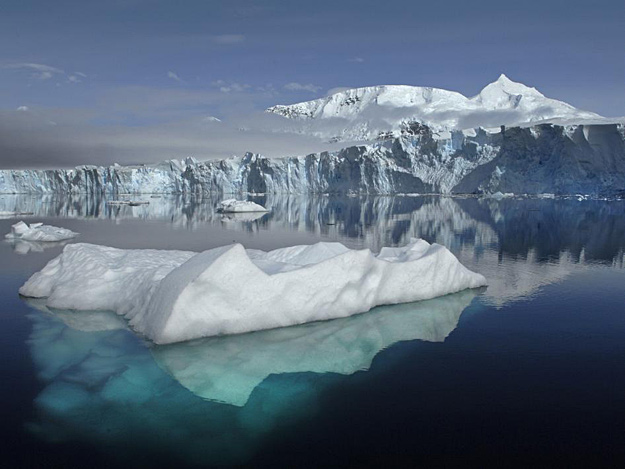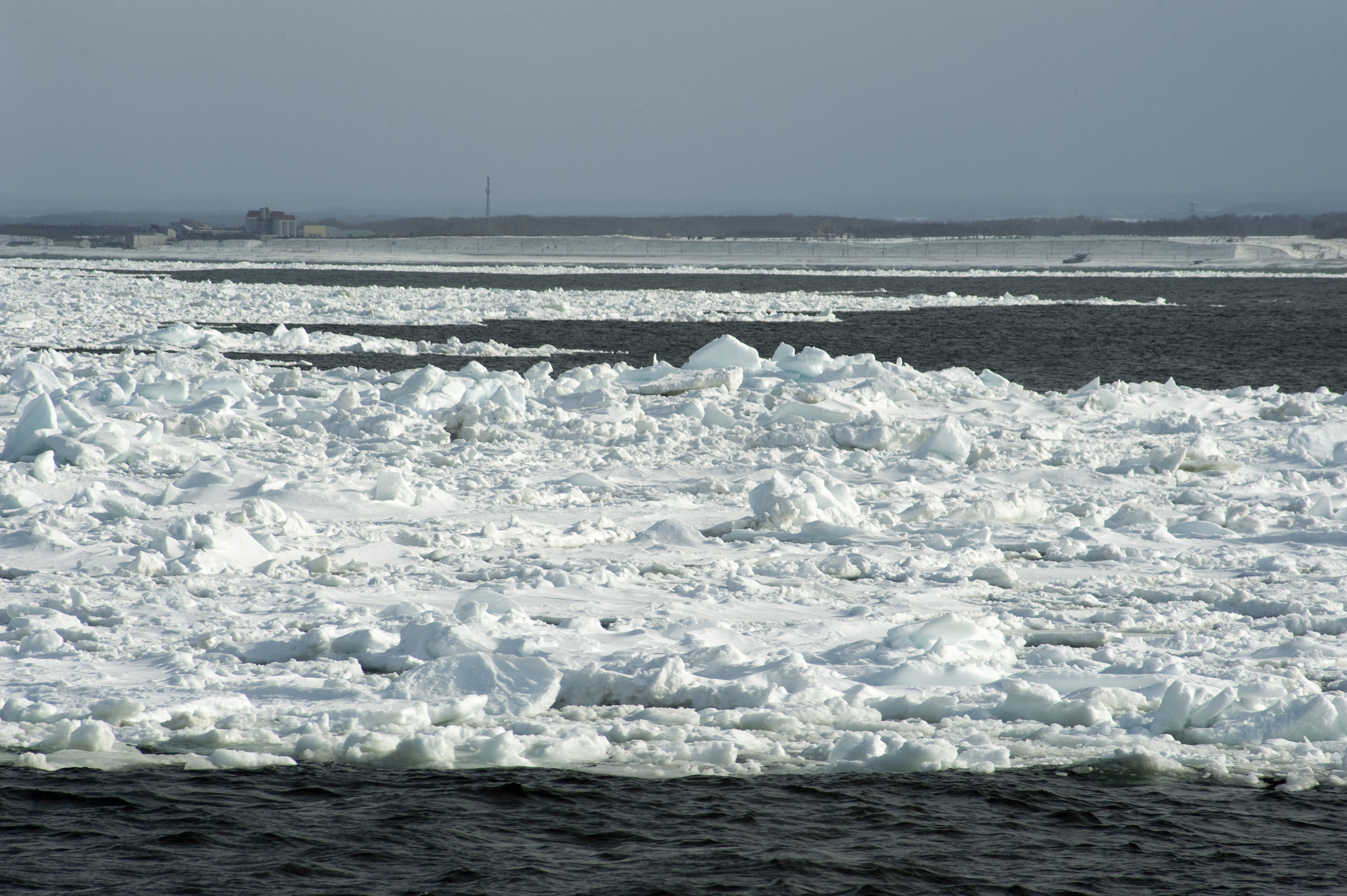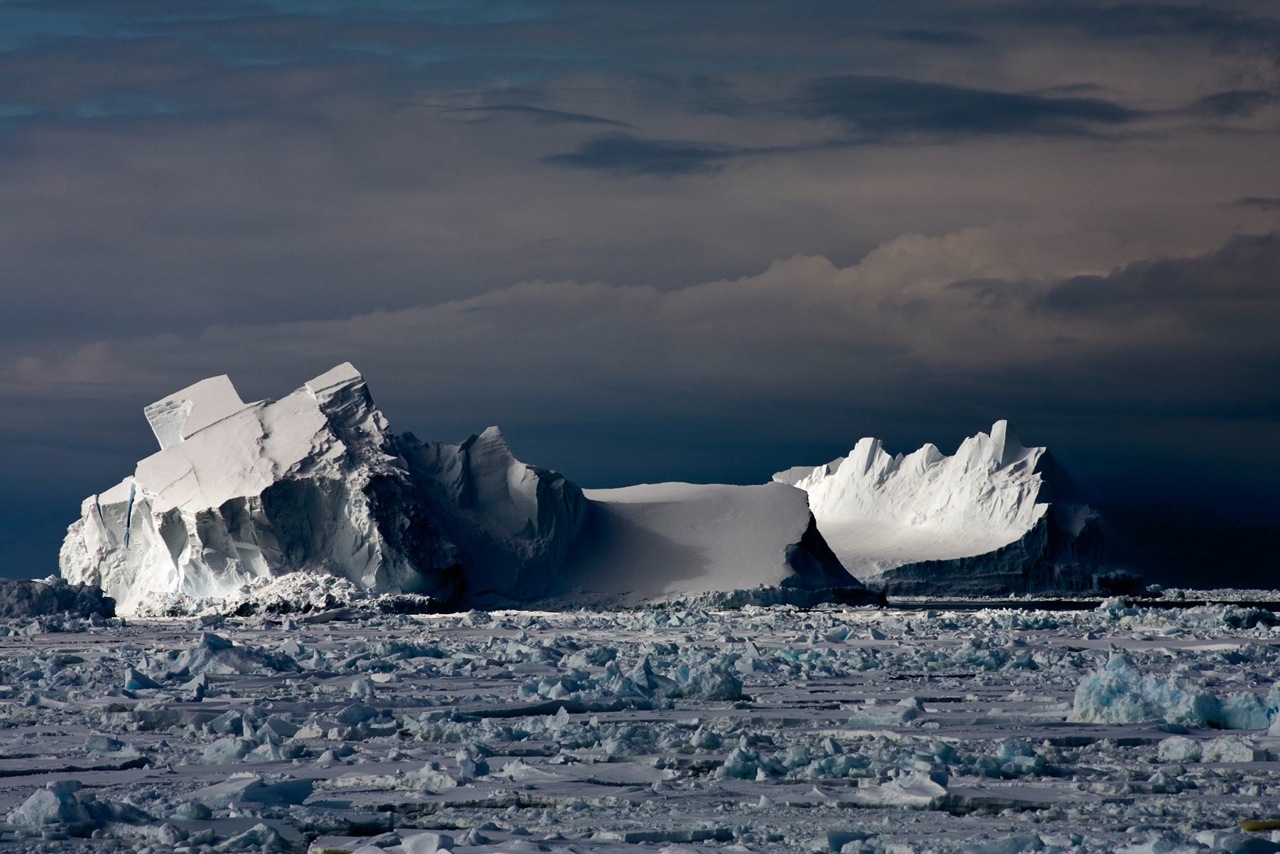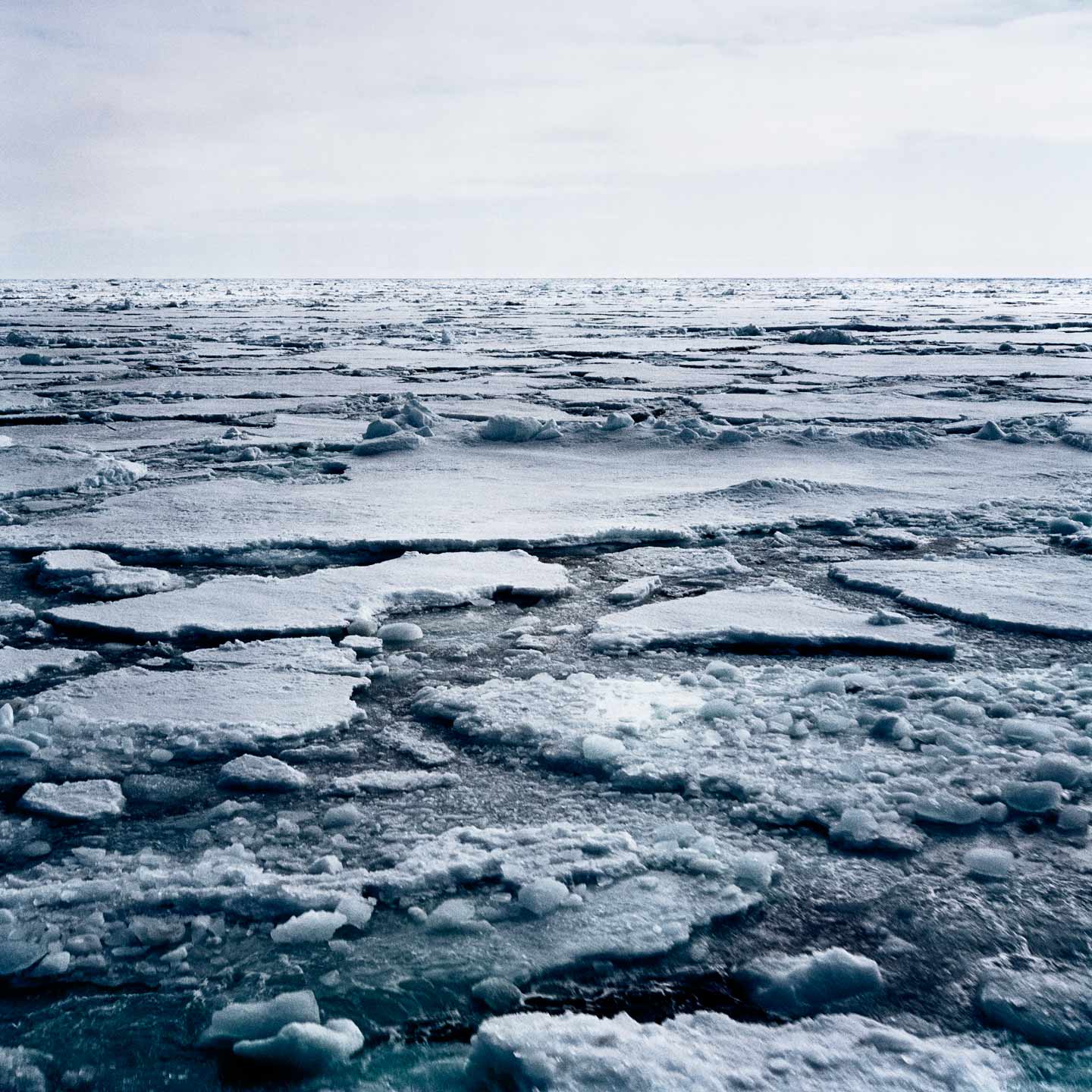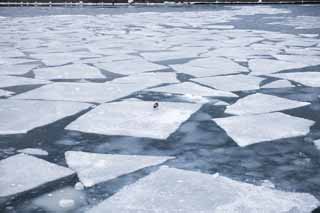Ice drift
Under ice drift is defined as the dynamic movement of sea ice in a main direction. This is referred to as moving ice drift, as opposed to fast ice, which is anchored on the coasts or on the seabed. The speed of movement depends on the wind, the prevailing ocean currents, the compactness of the ice and the temperature (season) of the ice region. Ice drift can be measured selectively with buoys or Eisdriftstationen or large area with satellite.
Ice drift in the Arctic
In the Arctic, there are two main streams of ice drift. The Trans- Polar Drift runs from Siberia to Greenland. It transports large amounts of ice through Fram Strait into the Greenland current along the east coast of Greenland. The Beaufort vortex rotates clockwise as seen from above from the northern coasts of Greenland, Canada and Alaska in the Beaufort Sea region. The speed of the ice drift is about 1 % to 2 % of the wind speed. In monthly averages for the period 1992-2009, it ranges from about one- half mile per hour after reaching the maximum sea ice extent in April, up to half a kilometer per hour after the peak of the melting period in October. In much of the Arctic since 1992, the rate of ice drift increased in total by about 20%. Since the year 2000 is a significant acceleration recorded. The reasons for this are the ever thinner ice cover and higher in parts of the Arctic wind speeds.
The Norwegian polar explorer Fridtjof Nansen examined as one of the first to detail the ice drift of the north polar region. The report on the accident Jeanette expedition under George W. DeLong Nansen reiterated in his 1882 established theory of a traction drive (drift ) in the pack ice over the Arctic Ocean. He developed the idea to be frozen with a suitable ship in polar pack ice, so as to drift over the North Pole to the North Atlantic. In the years 1893-1896 he proved his theory by the Fram Expedition to the pack ice suitable sailing ship Fram.
Nansen observed on his expedition a deviation of the ice drift from the prevailing wind direction. She encouraged Vagn Walfrid Ekman to the development of the Ekman spiral, which explains the deviation by the action of the Coriolis force.
Ice drift in the Antarctic
In the Antarctic, the coastal sea ice moves with the Antarctic Coastal Current to the west. In the Weddell Sea, it gets partially the Weddell Gyre along the Antarctic Peninsula to the north in the Antarctic Circumpolar Current. Also in the Ross Sea are transported through the Ross eddy parts of the ice northward into the Circumpolar Current, which can then drive it in predominantly easterly direction. Driftgeschwindgkeiten in Antarctica are higher than in the Arctic. Measurements with buoys between 1985 and 1997 have average drift velocities of 0.83 km / h on Antarctic Coastal Current and yield 0.61 km / h in the Circumpolar Current. Observed maximum speeds ranged up to 3.25 km / h
Several Antarctic expeditions failed in the ice drift of the Weddell Sea. So Wilhelm Filchner ship Germany was trapped by pack ice in March 1912, nine months after drifted north; in December they came to Georgia again. Another case is the Endurance expedition between 1914 and 1917 Ernest Shackleton. His expedition ship Endurance was trapped in the vicinity of Prince Regent Luitpold Land of the ice. The expedition members drove to the vicinity of Elephant Iceland at the northern tip of the Antarctic Peninsula, where they could escape to the island.



